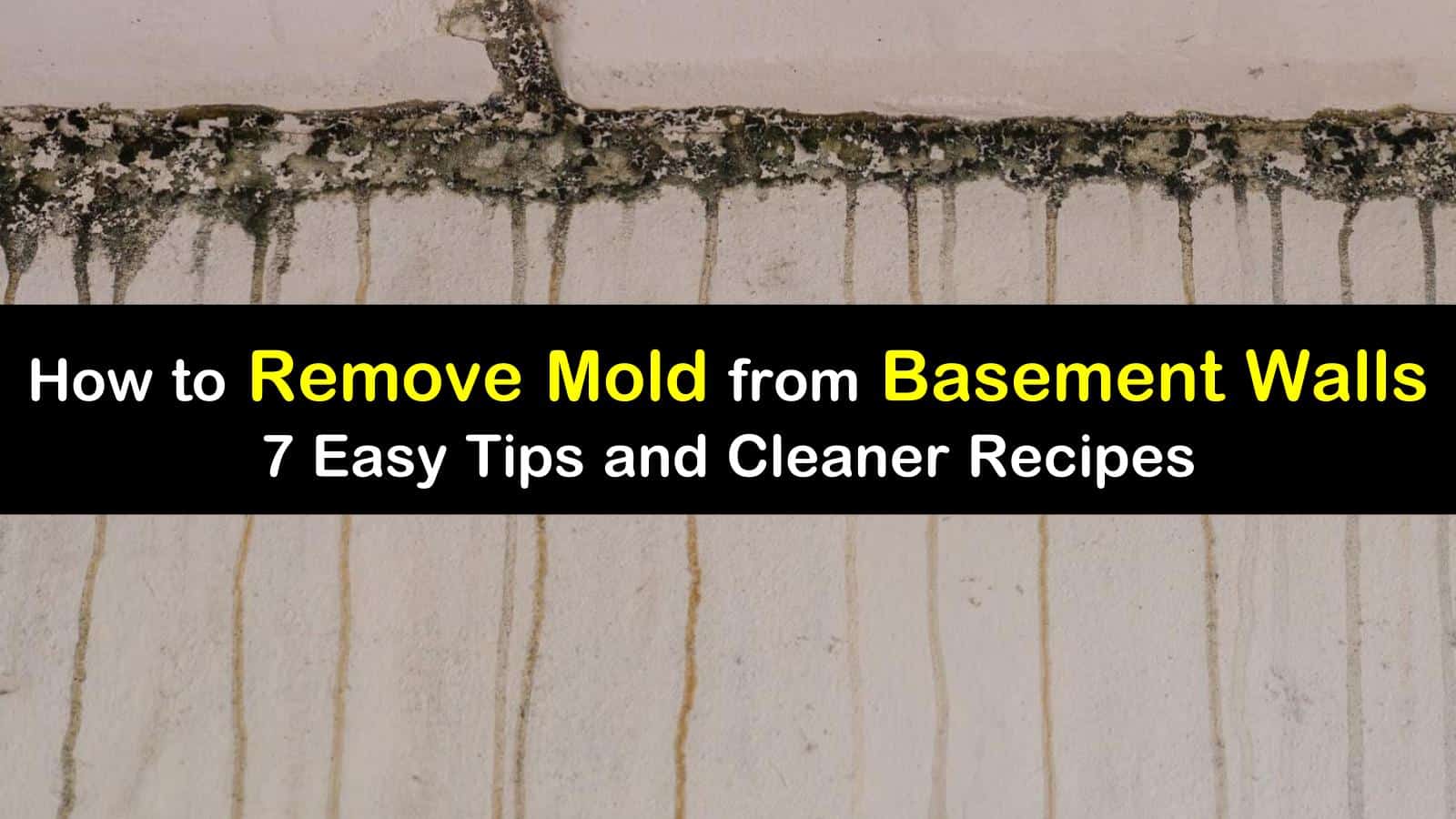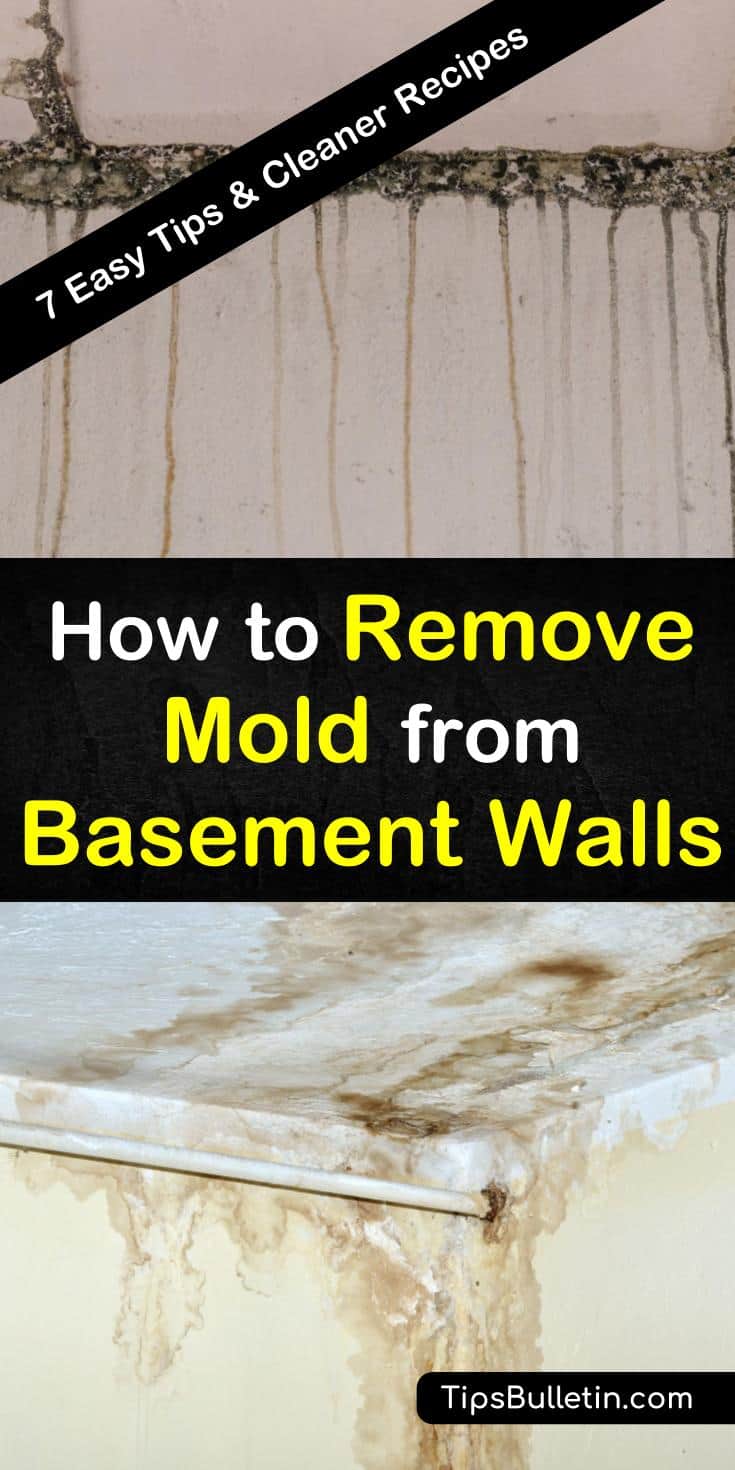Household mold and mildew are common invaders in basements, especially in the presence of water damage, sump pumps, or other moist conditions. Even air conditioners, air ducts, and exterior walls aren’t impervious to mold infestations. Depending on the type of mildew, the infestation can result in a musty smell or allergic reactions, and certain types of mold can pose health risks. It’s crucial to learn how to remove mold from basement walls and other porous surfaces.
If you’re considering how to get rid of mold, removing mildew from concrete walls, grout, and other surfaces isn’t complicated, but it can be taxing. More often than not, it requires a reasonable amount of elbow grease.
However, with the proper cleaning products and removal techniques, you can make this process much more straightforward and pain-free. If you’re looking to learn how to remove mold from basement walls, tiled surfaces, and more, read on!

How to Get Rid of Mold on Basement Walls
Removing mold from the surfaces in your home can be done in several different ways, depending on where it is located and how big the spot is. Unless you want a professional to conduct mold remediation for severe mold infestations, you can get rid of moss on concrete or mold on cement basement walls with supplies from your local home improvement store or hardware store.
Of course, we recommend hiring an inspector or investigating the type of mold or mildew first before you begin to tackle it, as some types of organic material are more dangerous than others. Otherwise, how to kill mold in a small area, no greater than a 10″ x 10″ spot, is a relatively simple process that doesn’t take a lot of time or energy.
Removing mold from wood is a little different than eliminating the problem from concrete, so pay close attention to the base material you are working with before applying a cleaning solution.
How to Clean Mold from Concrete Basement Walls with Hydrogen Peroxide
Hydrogen peroxide is a versatile and effective cleaner that’s a fungicide, virucide, and bactericide. There are dozens of peroxide uses for around the home, both inside and out.

Disinfecting with hydrogen peroxide will kill virtually anything that’s growing on your basement walls, including mold!
If you’re wondering how to clean mold from concrete basement walls or need to start cleaning brick walls in the basement or carport with this concrete cleaner, here’s how.
To kill mold on concrete basement walls or for an ideal DIY mildew remover, pour 3% hydrogen peroxide into a spray bottle. Saturate the walls with the peroxide, then let it sit for up to 30 minutes. Clean mold off walls by scrubbing the area thoroughly with a bristle brush after about ten minutes to help to lift any residual mold out of the pores in the concrete.
If you can, hose off the walls or scrub them down with warm water to remove any cling-on spores when you finish and leave the walls clean and shiny. Dry with a clean towel to eliminate water spots that could encourage more mold to grow.
Peroxide is an excellent option not only for mold removal but to get rid of other types of stains, as well, especially for how to clean white walls that may have mold or mildew.
Peroxide can be helpful to clean walls before painting, too, to ensure that you have a nice smooth surface for the paint. Keep a bottle or two on hand for both medicinal and cleaning situations.
Removing Mold from Cinder Block Walls with Borax
Borax is a trustworthy and effective DIY wall cleaner that’s well-known for its cleansing and deodorizing properties. Since Borax inhibits mold growth, it’s an excellent cleaning solution for removing mold from cinder block walls and other large areas. You don’t even need to clean it off when you’re finished.
Before you use one of our ways to clean cement of mold or mildew, vacuum all your moldy surfaces with a HEPA-certified vacuum minimize the number of spores that end up airborne. Mix the Borax and water in a bucket to create your cleaning solution.
Scrub any moldy surfaces thoroughly and remove visible mold particles. Let the Borax solution sit on the surface for a little while; if you don’t wash it off, it will inhibit future mold growth.
Kill Mold on Non-Porous Surfaces with Bleach
Bleach is an excellent disinfectant and mold-killer, but the problem is that it’s not useful on porous surfaces. Bleach doesn’t penetrate surfaces well, so while it won’t be effective on concrete, drywall, or unsealed grout, it’ll work wonders on sealed surfaces.
For this method, dilute one cup of bleach with at least one gallon of water, then spray or wipe the bleach solution onto any mold-covered surfaces. Bleach works best on non-porous surfaces like glass or sealed tile.
When working with bleach, be sure to wear protective gear such as rubber gloves, eye protection, and a respirator, especially in poorly-ventilated areas like crawl spaces and basements. Never mix vinegar or ammonia with bleach.
Kill Mold Safely with Vinegar
One of the safest DIY cleaners for killing mold is vinegar. Vinegar is a mild acid that doesn’t smell particularly pleasant, but it does its job with mildew. However, vinegar does not kill 100% of mold types, so do your research or test a small area before committing to it.
To clean mold with vinegar, liberally spray moldy areas with the undiluted white vinegar. Leave it on the moldy areas for at least an hour to penetrate and kill any roots embedded in the walls or floor.
Optionally, you may spray a solution of baking soda and water onto the vinegar-saturated areas to up its mold-killing power. Wipe down the surface with clean water to finish the job.
If your basement smells like sewage, you may have a clog in the drain in the floor or in the toilet in the bathroom. Pour a mixture of vinegar, water, and baking soda into the drain to release the clog and quickly eliminate that sewage smell in the basement.
Repeat applications may be necessary if the clog does not break up the first time. However, after the clog clears, your basement will smell fresh and clean again.
Kill Mold Naturally with Tea Tree Oil
Believe it or not, one of the uses for tea tree oil is a fungicide that’s surprisingly effective at killing molds and mildews on many different surfaces, from clothes to walls to shower stalls. If you’re looking for a healthy, holistic, pleasant-smelling way to kill mold in your home, tea tree oil might be just the ticket.
If you’re cleaning mold in a shower or other well-traveled area, you may be able to spray the area with the tea tree oil solution and leave it. Since you’re only using one part tea tree oil for every 48 parts water, there’s no need to rinse!
If the area is visibly moldy, you may want to scrub the mold away with a sponge or rag soaked in the tea tree solution instead. In both scenarios, leave the cleaner on the surface without rinsing to help discourage future mold growth. Watch tea tree oil use around pets, as it can be harmful to them if ingested.
Banish Mold Infestations with Professional Help
What gets rid of black mold? Most of the cleaners we’ve mentioned can snuff out black mold infestations, but we recommend getting professional help for significant black mold growth. This is because Stachybotrys chartarum, or black mold, can be harmful if breathed in large quantities.
If a basement mold problem is really severe, mold removal specialists might turn to fumigation to eradicate the infestation. Whichever method they choose to take care of your mold problem, you can rest assured that a professional will do a thorough job to prevent the black mold areas from returning.
If you don’t eradicate the source of the moisture that caused the mold, you could see more mold, but a professional will eradicate all mold spores and roots from an infestation so that the same colony cannot grow back, particularly in the same area.
Dehumidifiers and waterproofing paint can be useful for helping to stave off future mold issues. Wet, moldy surfaces like carpeting and drywall are often too far gone to be salvaged and need a replacement instead.

How did you like our guide on how to remove mold from basement walls and other surfaces? If you liked these mold-killing tips, make sure to share this guide on how to remove mold from basement walls with all of your friends on Facebook and Pinterest!